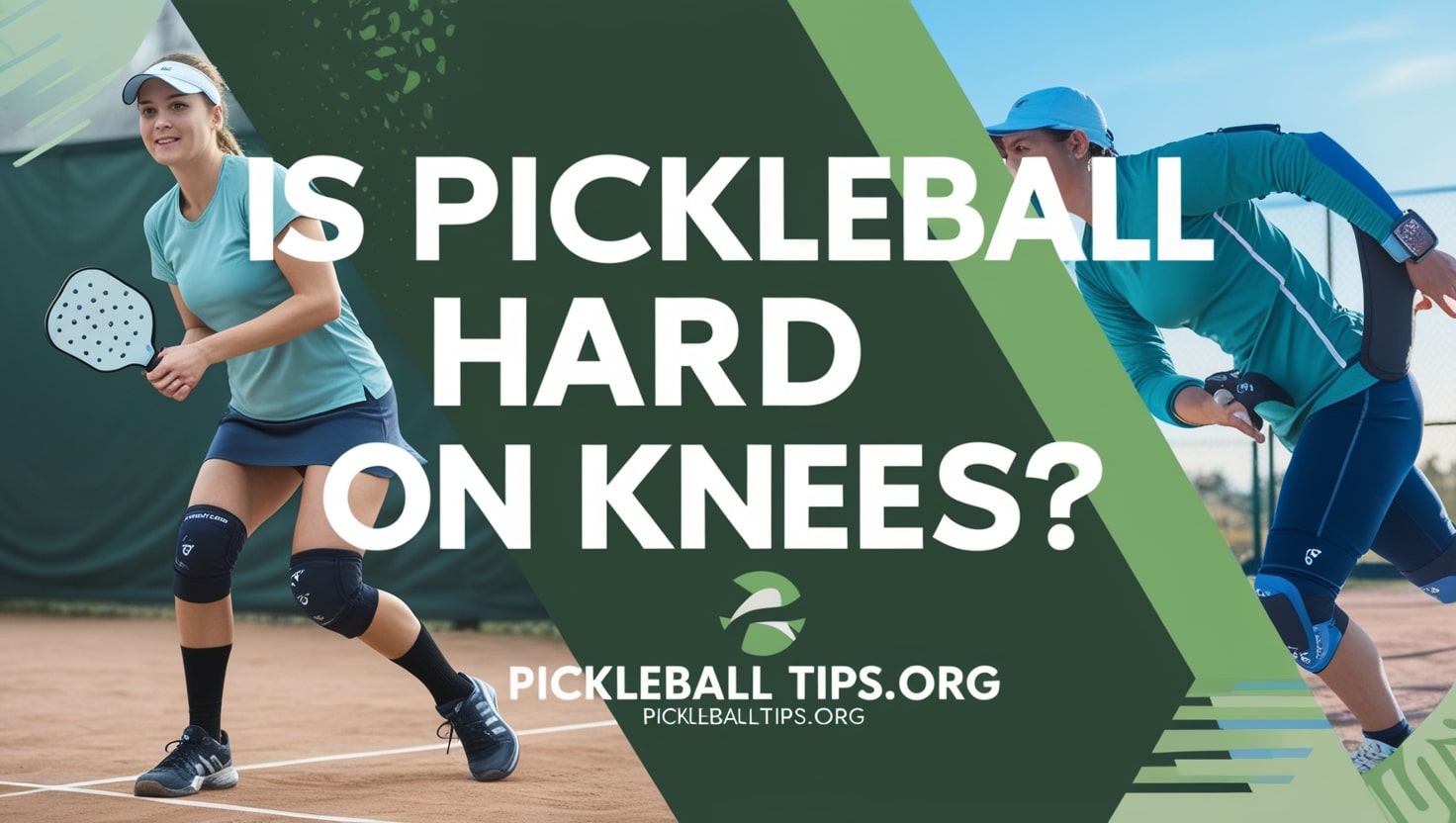Pickleball has become one of the fastest-growing sports worldwide, appealing to players of all ages. Combining elements of tennis, badminton, and table tennis, the game is accessible and enjoyable. However, a common question arises among potential players: Is pickleball hard on knees? This article explores the physical demands of pickleball, the potential strain it can place on knees, and ways to minimize injury risks while enjoying the game.
Understanding the Physical Demands of Pickleball

Pickleball is a low-impact sport that requires agility, balance, and coordination While it is less physically taxing than sports like basketball or soccer, it still involves rapid movements, quick directional changes, and repetitive bending.
Movements That Can Impact Knees
- Lateral Movements:
- Side-to-side movements are frequent in pickleball, especially when defending or reaching for shots near the sidelines. These motions can strain knee ligaments.
- Sudden Stops and Starts:
- Quick accelerations and abrupt stops, common during rallies, place stress on the knees.
- Knee Flexion and Extension:
- Repeated bending during low shots or dinks can wear down knee joints over time.
- Pivoting:
- Rotational movements during smashes or changes in direction can increase the risk of knee injuries, especially if the player’s technique is improper.
Comparisons to Other Sports
Compared to high-impact sports, pickleball is gentler on the joints. Activities like running or basketball expose knees to greater forces due to constant jumping and running over longer distances. Pickleball, on the other hand, is usually played on a smaller court with less continuous running.
Common Knee Issues Associated With Pickleball
Although pickleball is not inherently harmful to the knees, improper play or preexisting conditions can lead to discomfort or injury. Below are some common knee-related concerns:
1. Overuse Injuries
- Prolonged play without adequate rest can lead to overuse injuries like patellar tendinitis (commonly known as jumper’s knee). Symptoms include pain and swelling around the kneecap.
2. Sprains and Strains
- Quick lateral movements can stretch or tear ligaments, leading to sprains. Strains may also occur due to insufficient warm-ups or overstretching.
3. Meniscus Tears
- Pivoting or twisting movements increase the risk of meniscus injuries, particularly in older players or those with a history of knee issues.
4. Arthritis Aggravation
- Players with preexisting arthritis may experience flare-ups due to repetitive knee movements, especially on hard court surfaces.
Factors That Affect Knee Stress in Pickleball
Several factors influence how hard pickleball may be on your knees:
Court Surface
- Hard Surfaces (e.g., concrete): Increase impact on knees, especially during repetitive motions.
- Soft Surfaces (e.g., cushioned courts): Reduce strain and absorb shock better, making them gentler on joints.
Footwear
- Proper pickleball shoes with good cushioning and lateral support are crucial to reducing knee stress. Inadequate footwear increases the risk of slipping, twisting, and knee pain.
Playing Style
- Aggressive play with frequent lunging and abrupt stops may heighten knee strain compared to a more relaxed style.
Fitness Level
- Players with stronger leg muscles and better overall fitness are less likely to experience knee pain. Weak quadriceps or hamstrings can make knees more susceptible to injury.
Tips to Prevent Knee Pain While Playing Pickleball
Taking preventive measures can significantly reduce the risk of knee discomfort or injury. Here are some key strategies:
1. Warm-Up Properly
- Engage in light cardio exercises and dynamic stretches before playing. Focus on stretching the hamstrings, quadriceps, and calves to enhance flexibility and reduce stiffness.
2. Wear Supportive Shoes
- Invest in court shoes designed specifically for pickleball or tennis. Look for features like shock absorption, lateral support, and non-slip soles.
3. Strengthen Supporting Muscles
- Incorporate strength-training exercises targeting the quadriceps, hamstrings, glutes, and calves. Stronger muscles provide better support for knee joints.
4. Use Knee Braces or Supports
- For those with a history of knee problems, wearing knee braces or compression sleeves can provide additional stability and reduce pain.
5. Mind Your Playing Surface
- Whenever possible, choose cushioned courts over hard surfaces. Playing on softer surfaces reduces impact and preserves joint health.
6. Learn Proper Techniques
- Work on proper footwork, balance, and shot techniques to minimize awkward or risky movements that strain the knees.
7. Rest and Recover
- Avoid overplaying. Take regular breaks during sessions and allow sufficient recovery time between games to prevent overuse injuries.
When to Seek Medical Advice
If knee pain persists despite preventive measures, consult a medical professional. Indications for seeking advice include:
- Persistent swelling or pain lasting more than a few days.
- Difficulty bearing weight on the affected knee.
- Clicking, popping, or locking sensations.
- Instability or a feeling that the knee may “give out.”
Early intervention can prevent minor issues from becoming chronic problems.
Conclusion: Is Pickleball Hard on Knees?
In summary, pickleball can be hard on the knees for some individuals, particularly those with preexisting conditions or poor playing habits. However, for most players, the sport is relatively low-impact and poses minimal risk when appropriate precautions are taken. By wearing proper footwear, strengthening supporting muscles, and practicing good techniques, players can enjoy pickleball while safeguarding their knee health.
Thank you for reading this comprehensive guide on is pickleball hard on knees. We hope you found it helpful. For more tips and insights, visit us at pickleballtips.org. Happy playing!
